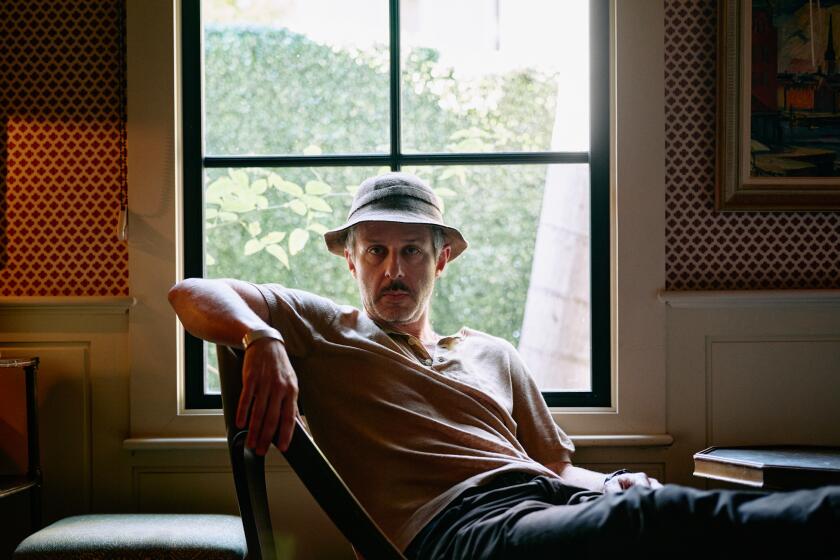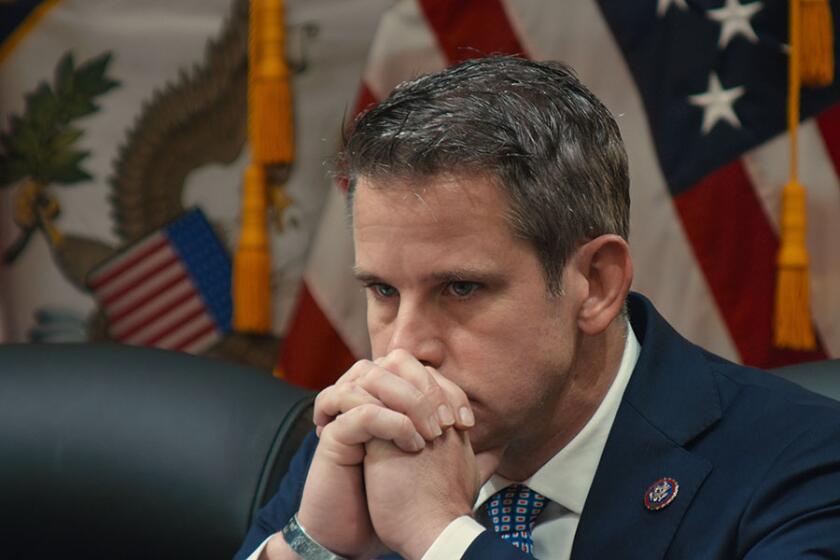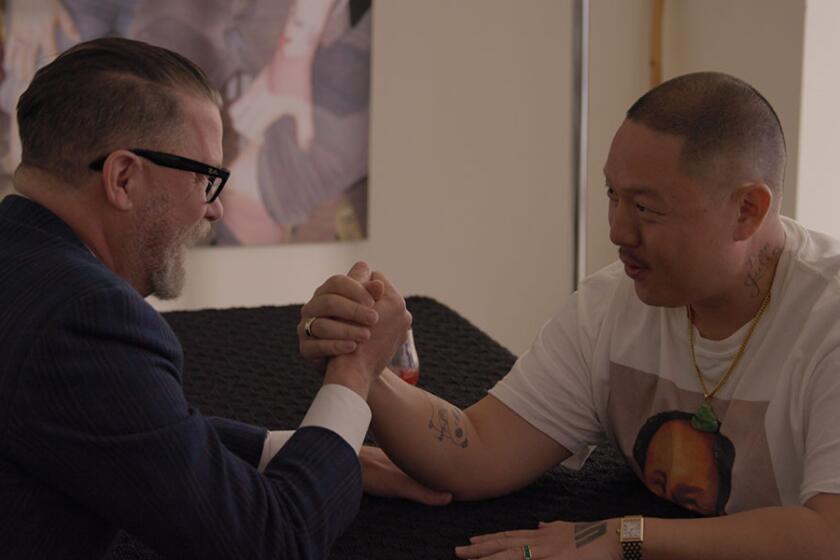Rolling Back in Time
Punk poet Henry Rollins stands facing the cameras, stone-faced and covered in tattoos. To a thicket of reporters, Rollins offers a gem of wisdom. “Where it comes from,” he says, “is often cooler than where it ends up.”
Rollins is talking about skateboarding, the subject of the Tuesday night movie premiere. He is among the crowd of denim-, flannel- and tattoo-clad surfers, skateboarders, actors and musicians who trekked to a theater in the Pacific Design Center to see “Dogtown and Z-Boys,” director-writer Stacy Peralta’s film on the birth of modern skateboarding.
The film features Rollins and several teenage boys (Z-Boys) who reinvented the sport in Venice (Dogtown) during the 1970s. The movie, which won acclaim and awards at the 2001 Sundance Film Festival, opens in some cities Friday and nationally by mid-May.
The push to get a seat on Tuesday night is frantic, even for Red Hot Chili Peppers lead singer Anthony Kiedis, who arrived late. He barks at the E! network folks trying to grab a sound bite. “I have to get a seat!” he says when a reporter persists. “I know you don’t care about me or my seat!”
Kiedis eventually lands one, but scores of others are stranded in the lobby. To kill time, they sip martinis and watch Sean Penn’s young son Hopper launch himself off the velvet sofas. Penn stands alone near a curtained wall, occasionally waving his son off the furniture. Later, a woman walks to that wall and pulls away the curtain to reveal hundreds of goody bags, stuffed with CDs, DVDs, hair products and other merchandise. “It’s a free-for-all now,” says one man to his companion. The entire crowd rushes the wall, nearly trampling Penn and Hopper to grab two and three bags each.
Moments later, the theater empties and the room becomes a reunion party. Skateboarding legend Tony Alva, wearing green sneakers and dreadlocks, is locked in a bearhug by two other men. Former Z-Boy Shogu Kobu, who now works in advertising, points out his former skateboarding pals. They are aging men wearing T-shirts and jeans and puckish attitudes. “I think Jay Adams is the only one who isn’t here,” he says as a Curtis Mayfield record plays in the background. “I think he got out of jail, but he couldn’t leave Hawaii.” Another former Z-Boy, Chris Rumi, lines up at the bar. He traveled from Cape Cod, Mass., to see the film. “This is the first time I’ve seen these people in 20 years,” he says. “It’s a total blast.”
Shooting for a Star
on the Walk of Fame
“Dear Mr. Grant: I understand that some of Freddy Fender’s thousands of fans have proposed him for a star on the Hollywood Walk of Fame. I heartily endorse his inclusion in this walk of stars.” So began a 1998 letter from then-Texas Gov. George W. Bush to Johnny Grant, ceremonial mayor of Hollywood. Bush’s pitch was successful--Fender got his star.
Grant has seen a lot of such letters, winners and losers. Each year, he and his five-member committee review close to 300 requests for the 15 to 20 stars that go to famous names each year, a process that will begin again soon. May 31 is the deadline for this year’s submissions.
Mostly, publicists, labels or fan clubs nominate stars for the walk, but people have been known to take matters into their own hands.
“I don’t want to mention names,” says Grant, quickly mentioning two self-nominees: former Chrysler chairman Lee Iacocca and “Popcorn King” Orville Redenbacher (who proposed himself as worthy of a star before his bathtub-drowning death in 1995).
Ozzy Osbourne, a recent addition to the walk, supported his label’s nomination with a letter stating that a star “would not only be an important honor, but would fulfill my childhood dream.”
Although proper procedure dictates a written application, Grant often gets pitches when he’s out and about.
“I was at funeral recently, and a [publicity] guy was hustling a star--for the deceased and another client.” And, just the other day, Grant says, he was walking down the boulevard when a sumo wrestler recognized the mayor and demanded a star. The wrestler wasn’t a good sport about rejection.
“He got very upset,” says Grant, with excitement in his voice. “I got frightened and ran.”
Unless the sumo had a side career in movies, TV, radio, music or live performance, he wouldn’t be eligible for a spot. The only requirement besides fame in those fields is that the honored celebrities will be present at the dedication. Posthumous stars are an exception, Grant adds. “They don’t have to be there for that. We let them skip it.”
Winning has a payoff, but also a price: Honorees must pay $15,000, which covers the ceremony and the making of the star. Those selected by Grant and his committee go to Los Angeles City Council for approval. And the final vote, or veto, goes to the property owner on the part of the walk where the star will be located. Sometimes, owners will nix a star candidate and hold out for someone more famous. “They always want a bigger name,” he says.
Grant’s own name, it turns out, was big enough for two stars: one in 1980 for his work in radio, and an honorary one in February, for his work promoting Hollywood.
“Some will play like they don’t want it,” Grant says, but “the interesting thing is that years later, when their careers are fading, they’re desperate to get a star.”
City of Angles runs Tuesday through Friday. E-mail angles@ latimes.com.
More to Read
Only good movies
Get the Indie Focus newsletter, Mark Olsen's weekly guide to the world of cinema.
You may occasionally receive promotional content from the Los Angeles Times.










